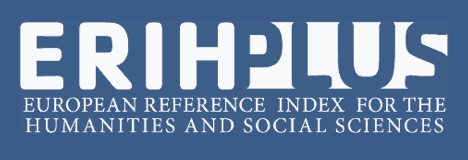Google earth and teaching of cartography: a look at the new geotechnologies at the Santo Afonso Rodriguez School, Teresina municipality, state of Piaui
Abstract
The above study deals with the proposed implementation of geotechnologies, through Google Earth, at the Santo Afonso Rodriguez School, in the city of Teresina, state of Piauí. The research was carried out with 2nd year high school students during the second half of 2016. The overall objective was to highlight Google Earth as a geotechnological tool for teaching cartography. In this sense, we worked, methodologically, with the tools available in this platform with the concepts of scale, legend, coordinates and interpretation of orbital images. A questionnaire was applied to identify if the students were able to understand the concepts worked in practice. It was verified that the use of the tool used potentiates teaching and learning, with an emphasis on cartographic concepts.
References
ALVES, T. dos S. A utilização do aplicativo Google Maps no processo de ensino-aprendizagem da cartografia: uma experiência na escola pública. In: SIMPÓSIO BRASILEIRO DE SENSORIAMENTO REMOTO-SBSR, 15. , 2011, Curitiba. Anais... Curitiba: INPE, 2011.p.3408-3414.
BRASIL. Ministério da Educação. Parâmetros Curriculares Nacionais: geografia. Brasília: MEC/SEF, 1998.
BRASIL. Ministério da Educação. Parâmetros Curriculares Nacionais: ensino médio. Brasília: MEC/SEMT, 1999.
BRASIL. Ministério da Educação. Orientações curriculares para o ensino médio: ciências humanas e suas tecnologias. v. 3, Brasília: MEC/SEF, 2006.
CASSAB, C. Reflexões sobre o ensino de geografia. Geografia: ensino & pesquisa. Santa Maria, v.13, n.1, p.43-50, 2009.
CAVALCANTE, L. de S. A geografia e a realidade escolar contemporânea: avanços, caminhos, alternativos. In: SEMINÁRIO NACIONAL: CURRÍCULO EM MOVIMENTO-PERSPECTIVAS ATUAIS, 1, Belo Horizonte. Anais... Belo Horizonte, 2010, p.1-16.
COSTA, F. R. da; ASSIS, F. de; LIMA, F. A linguagem cartográfica e o ensino-aprendizagem da geografia: algumas reflexões. Geografia Ensino & Pesquisa, Santa Maria, v.16, n.2, maio/ago, 2012.
CUNHA, M. M. da; ALBUQUERQUE, E. L. S. Tecnologias da informação e comunicação aplicadas ao ensino: um olhar para os SIG-WEB. In: Mostra de Geotecnologias e Aplicações Práticas, 1, Teresina. Anais... Teresina, 2016, p.224-236.
KAERCHER, N. A. A geografia é o nosso dia-a-dia. Geografia em sala de aula pratica e reflexões. Porto Alegre: Ed. UFRGS, 1998.
MEDEIROS, L. S. de. O currículo escolar de geografia e a construção do conhecimento: um olhar para a prática pedagógica do professor de geografia. 2010. 205f. (Mestrado em Geografia) - Programa de Pós-Graduação em Geografia, João Pessoa, 2010.
OLIVEIRA, L. O ensino/aprendizagem de geografia nos diferentes níveis de ensino. In: PONTUSCHKA, N. N.; OLIVEIRA, A. U. de. (Orgs.). Geografia em perspectivas: ensino e pesquisa. 3.ed. São Paulo: Contexto, 2009. p. 217-220.
PIRES, T. B.; PEREIRA, T. H. A. de A.; PIPITONE, M. A. P. O uso do Google Garth e a apresentação de imagens tridimensionais como ferramentas complementares para a educação ambiental. Geosaberes, Fortaleza, v. 7, n. 13, p. 112-122, jul. / dez. 2016.
ROSA, R. Geotecnologias na geografia aplicada. Revista do Departamento de Geografia, São Paulo, v.16, n.1, p.81-90, 2005.
SOUSA, I. B.; DI MAIO, A. C. Tecnologias aplicadas à cartografia na educação ambiental: uma experiência no segundo segmento do ensino fundamental. In: Congresso Brasileiro de Cartografia, 26, 2014, Gramado (RS). Anais... Gramado: SBC, 2014. p.1-10.
STÜMER, A. B. As TIC´S nas escolas e os desafios no ensino de geografia na educação básica. Geosaberes, Fortaleza, v.2, n.4, p.3-12, ago./dez. 2011.
TOMITA, L. M. S. Os desafios de aprender e ensinar geografia. In: ASARI, A. Y. (Org.). Múltiplas geografias: ensino, pesquisa e extensão. Londrina: UEL, 2012. p. 35-54.
Keywords
Policy Proposal for Free Access Journals
Authors who publish in this journal agree to the following terms:
a. Authors retain the copyright and grant the journal the right of first publication, with the work simultaneously licensed under the Creative Commons Attribution License which allows the sharing of the work with acknowledgment of the authorship of the work and initial publication in this journal.
b. Authors are authorized to take additional contracts separately, for non-exclusive distribution of the version of the work published in this journal (eg publish in institutional repository or as a book chapter), with acknowledgment of authorship and initial publication in this journal.
c. Authors are allowed and encouraged to publish and distribute their work online (eg in institutional repositories or on their personal page) at any point before or during the editorial process, as this can generate productive changes, as well as increase the impact and The citation of published work (See The Effect of Free Access).





















